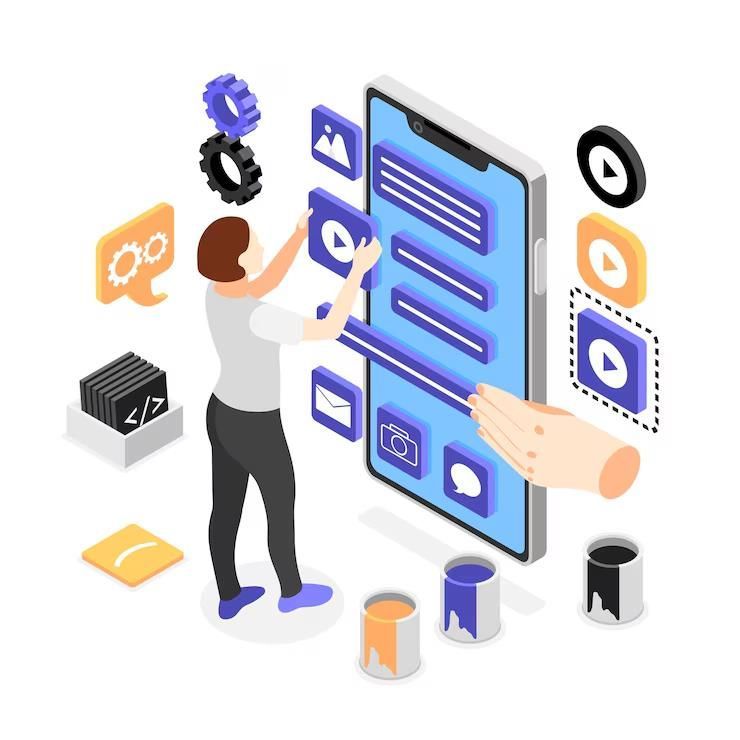Powering Your Digital Future: Exploring Web App Development Services
In today's rapidly evolving digital landscape, businesses are increasingly turning to web applications to streamline operations, enhance customer engagement, and drive innovation. If you're looking for robust and scalable digital solutions, you've likely been searching for "web app development services", "web application development services", or a reliable "web application development company". Let's explore the world of web app development and how it can transform your business.
Why Invest in Custom Web Application Development?
Unlike standard websites that primarily focus on displaying information, web applications are interactive, feature-rich platforms designed to perform specific tasks. Investing in custom web application development offers numerous advantages:
- Tailored Solutions: Web apps are built specifically to address your unique business needs and workflows, providing a perfect fit that off-the-shelf software often can't match.
- Improved Efficiency: Automating tasks and streamlining processes through web applications can significantly boost productivity and reduce operational costs.
- Enhanced User Experience: Well-designed web applications offer intuitive interfaces and seamless functionality, leading to improved user satisfaction and engagement.
- Scalability and Flexibility: Custom-built web apps can be designed to scale as your business grows, accommodating increasing user loads and evolving requirements.
- Data Management and Analysis: Web applications can provide powerful tools for collecting, managing, and analyzing data, offering valuable insights for informed decision-making.
- Competitive Advantage: A unique and effective web application can differentiate your business from competitors and provide a significant market advantage.
Key Considerations When Choosing a Web Application Development Company
Selecting the right "web application development company" is crucial for the success of your project. Here are some important factors to consider:
- Technical Expertise: Ensure the company has a strong team of developers with expertise in the technologies relevant to your project (e.g., specific programming languages, frameworks, databases).
- Portfolio and Case Studies: Review their past work to assess the quality and complexity of the web applications they have developed. Look for projects similar to yours.
- Development Process: Understand their development methodology (e.g., Agile, Waterfall) and how they approach project management, communication, and testing.
- Communication and Transparency:
Choose a company that values clear and consistent communication throughout the development lifecycle.
- Post-Launch Support and Maintenance:
Inquire about their support and maintenance services to ensure your web application continues to function optimally after deployment.
- Security Measures: Discuss their approach to security to ensure your web application and user data are protected.
The Web Application Development Lifecycle: A Collaborative Journey
Developing a successful web application is a collaborative process that typically involves the following stages:
| Step | Description | Your Involvement |
|---|---|---|
| Discovery & Planning | Defining the project scope, objectives, target users, features, and technical requirements. Creating a detailed project plan and timeline. | Providing comprehensive information about your business needs, target audience, and desired functionality. Actively participating in planning sessions and approving the project roadmap. |
| Design (UI/UX) | Designing the user interface (UI) and user experience (UX) of the web application, focusing on usability, aesthetics, and user flow. Creating wireframes and mockups. | Providing feedback on the design concepts and ensuring they align with your brand and user expectations. |
| Development (Frontend & Backend) | Building the actual web application, including the user-facing frontend (what users see and interact with) and the server-side backend (the logic and data management). | Regular progress updates and opportunities to review working versions of the application. Providing timely feedback on functionality and performance. |
| Testing & Quality Assurance (QA) | Rigorous testing of the web application to identify and fix bugs, ensure functionality, performance, and security. Various testing methods are employed. | Participating in user acceptance testing (UAT) to ensure the application meets your requirements and user needs. Providing detailed feedback on any issues found. |
| Deployment & Launch | Deploying the completed web application to a live server environment and making it accessible to users. | Collaborating on the deployment plan and ensuring all necessary infrastructure is in place. |
| Maintenance & Support | Ongoing monitoring, bug fixes, updates, security patches, and technical support to ensure the web application continues to function smoothly and securely. | Establishing a clear communication channel for reporting issues and requesting support. Discussing and agreeing on service level agreements (SLAs). |
Investing in custom "web application development services" can be a game-changer for your business, enabling you to achieve greater efficiency, enhance customer experiences, and unlock new opportunities. Choosing the right "web application development company" as your partner is the first step towards realizing your digital vision.
Conclusion
In today's digital landscape, custom web applications are powerful tools that can drive innovation and growth for your business. If you're seeking expert "web app development services" to streamline your operations, engage your customers, or create entirely new digital solutions, look no further than Konik Tech. We are a dedicated team of experienced web application developers committed to building robust, scalable, and user-friendly applications tailored to your unique needs. Visit our website to explore our portfolio, learn more about our development process, and discuss how we can help you power your digital future.
Frequently Asked Questions
What is the difference between a website and a web application?
A website primarily displays information, while a web application is interactive software that allows users to perform specific tasks. Think of a website as a brochure and a web application as a tool.
What technologies are commonly used in web application development?
Common technologies include programming languages like JavaScript, Python, and Java, frameworks like React, Angular, and Node.js, and databases like PostgreSQL and MongoDB. The specific technologies used depend on the project requirements.
How much does web application development cost?
The cost of web application development varies significantly based on the complexity of the features, the size of the development team, and the project timeline. Custom quotes are essential for accurate pricing.
How long does it take to develop a web application?
The development timeline depends on the scope and complexity of the project. A simple web application might take a few months, while a more complex enterprise-level application could take a year or more.
What is involved in web application maintenance and support?
Maintenance includes tasks like bug fixing, security updates, performance optimization, and ensuring compatibility with evolving technologies. Support involves providing technical assistance to users.






